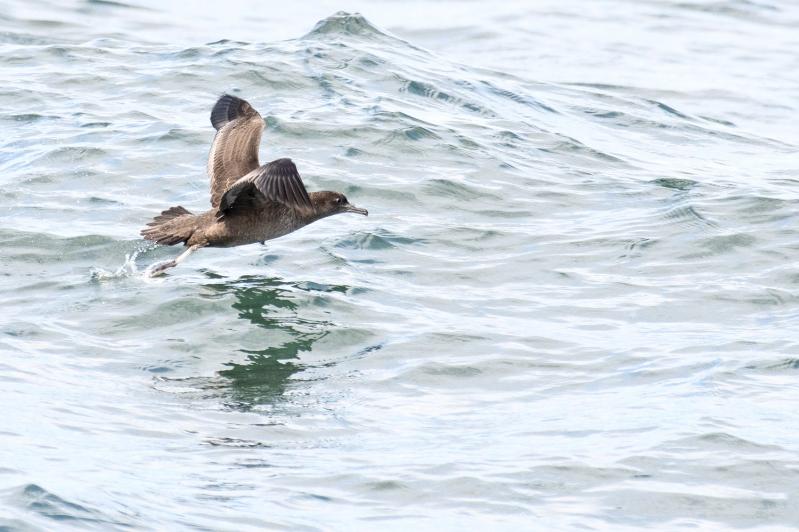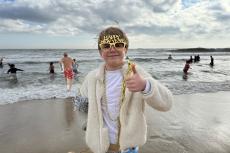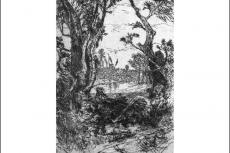Cold, still, quiet, and clear conditions marked the morning of the Audubon Christmas Bird Count in Montauk on Dec. 14. The cold proved challenging, if not for the groups of birders in search of birds, then certainly for the birds.
Numbers were down for total species observed, at 124, and for individual birds counted. Only two species, the ruby-crowned kinglet and ring-necked duck, marked new high counts. More, such as the yellow-rumped warbler, American tree sparrow, and belted kingfisher, were found in relatively low numbers.
“It’s been 125 years since the first Christmas Bird Count,” said Brent Bomkamp, who, with Angus Wilson, compiled the bird data submitted by six teams spread over a 15-mile circle centered on downtown Montauk. “This is one of the oldest counts that exists today. The first Montauk count was in 1921. I don’t believe there are more than 10 other Christmas Bird Counts that are that old,” he told the crowd of 30 birders at the compilation dinner, hosted by the South Fork Natural History Museum in Bridgehampton.
Highlighting the challenging conditions in the field was the fact that the bird of the day, an extremely late sooty shearwater (they typically depart from our waters by late summer), which had never before been found on the count, was observed by only one birder, Elias Markee-Ratner, a 14-year-old birding wunderkind, as he scanned the ocean east of the bluffs at Camp Hero.
Elias noticed a fishing boat racing the sun to dock by dark, hounded by hundreds of gulls. When first spotted, it was likely a mile off the Point, but he kept with it as it motored closer, until he was able to start identifying birds through the chaos.
“I picked up a smaller bird making its way through the group of gulls, skimming just over the water and occasionally banking slightly, and immediately marked it out as a shearwater,” he wrote in his eBird sighting report. “It stood out for its unusual flight style, smaller size, and much darker coloration than any gull (the entire bird was almost black), and my mind immediately began racing as I tried to get a better view to confirm my suspicions that it was a sooty shearwater.” A silvery patch on the otherwise dark underwing, along with his other observations, was enough to rule out other species.
While 2024 has been questionable in many regards, it has been a wonderful year for shearwater sightings off Montauk Point. The birds, which are pelagic, living most of their lives at sea, have been viewed from land with uncommon frequency. Even the Manx shearwater, rarely spotted from land, has been widely reported. Great, Cory’s, and sooty shearwaters all lingered long into the autumn. One sooty apparently decided to hang around to become famous.
The day before the count, an ash-throated flycatcher, a rare bird for Long Island any month of the year, and exceptionally so in December, when there is a dearth of flying insects, had been spotted at the Montauk State Park restrooms. Observers surmised insects were drawn to the heat and exhaust of the facility, which in turn attracted the flycatcher. Sadly, however, the bird failed to appear on the day of the count, perhaps a victim of the low overnight temperatures.
A count day always unfolds with questions, only some of which are answered. “Is there a cedar waxwing trailing that flock of robins?” “I see a kinglet, is it ruby-crowned?” “Could this be a king eider?”
Friends, with years spent in the same territory, try to get other birders “on” the birds they’re viewing. “You see that low horizontal branch leading away from the trunk? The bird is feeding just below it.” Sounds in the leaves along the sides of trails, presumed to be white-throated sparrows at this time of year, are inspected, in case an eastern towhee or fox sparrow makes a cameo.
At the compilation dinner, Mr. Bomkamp began by calling out “expected birds,” those that have been seen at least five of the last 10 years on the count. Altogether, the teams found 115 of these expected birds. For example, he’d say “mallard” and a representative from each territory reports how many they counted in their area. If only a single territory reports a species, it’s called a “save.” If no territory finds a bird, it’s a dreaded “miss.”
Some saves: Accabonac with Northern pintail; Lake West with rock pigeon, common merganser, and Iceland gull; Gardiner’s with dunlin; Point South with black-legged kittiwake; Napeague with purple finch and horned lark. Key misses included: wood duck, purple sandpiper (“A very tough miss,” Mr. Bomkamp said), king eider, American woodcock, common snipe, and peregrine falcon.
There were rare birds too. From the beach at Ditch Plain, two harlequin ducks; off Lazy Point, a snowy owl; at the Lake Montauk Inlet, a black-headed gull, and in the Lake West region, a long-eared owl, the second “best” bird on the count. Bald eagles had a solid showing at 27. A great egret that stalked a marsh on Napeague was only the seventh ever recorded on the count.
Meanwhile, over on Gardiner’s Island, a cherished territory that has been relatively untouched by humans, the streak of no house sparrows continued. “It’s still pristine,” Mr. Bomkamp said, eliciting laughter from the compilation dinner crowd.




